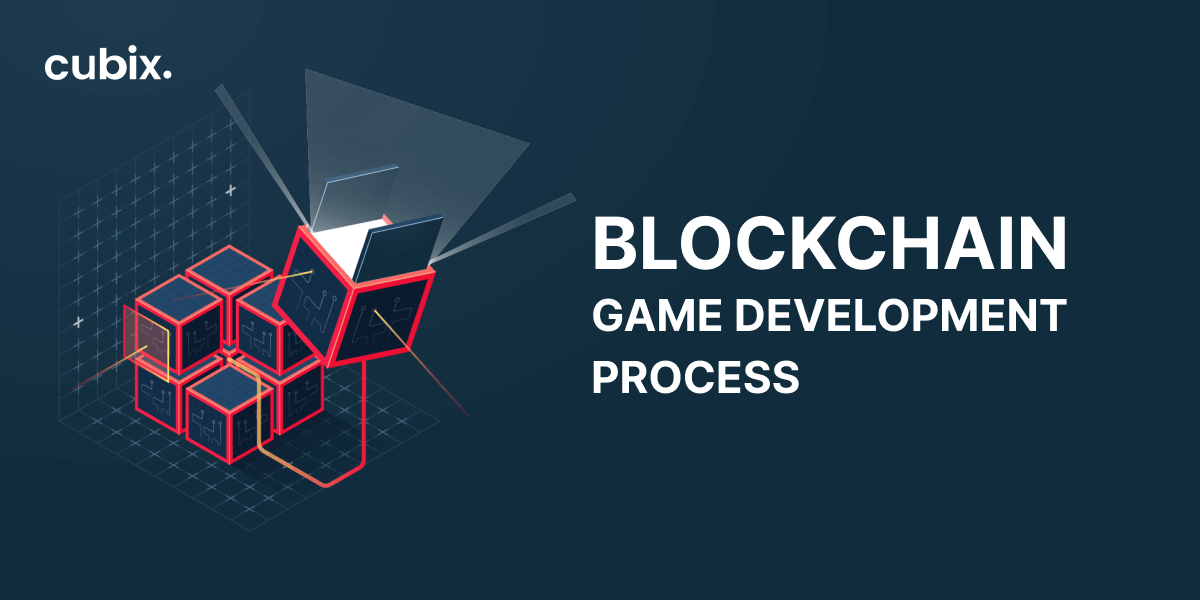Almost all industries have grown and outshone in the past few decades, offering numerous features and applications. Still, the one industry that outclasses others and got a huge light-speed spark even during the pandemic is definitely "Gaming." This sector constantly undergoes various changes, new trends, tech, and platforms, molding it into something appealing for consumers.
No one has ever thought of the transition of games from traditional to advanced play-to-earn game models. But, then, earning through playing games revolutionized the entire industry. Now, gaming has morphed from a hobby to a lucrative career. Moreover, with the innovative blockchain game development, people can now trade, sell, rent, and buy in-game items or NFT assets through another promising technology: cryptocurrency.
In this article, we will shed the spotlight on the blockchain game development process and the terminologies associated:
What is Blockchain Exactly?
Blockchain is a digital ledger employing a cryptographic approach to track assets and record transactions for both tangible and intangible possessions among a p2p distributed computer network system. In the blockchain, the transactions that take place make blocks of data which are then recorded and stored on a diverse server called "node," linking the server with each computing network, making a chain structure of blocks; hence this suggested the name blockchain.
Despite unifying records on one centralized spot, blockchain uses a decentralized way of storing data. The feature that makes blockchain the most secure and tamperproof database is tracking an inconsistency in the record and cross-checking it with the records of other participants.
Changes in any record do not affect a whole chain of the block; instead breach the data of one block, making it hard to hack. Initially, it was introduced as a medium for trading currency virtually, but it reshaped itself and imposed its applications in various industries like NFT, Metaverse, and gaming.
Keep reading to discover and get the actual extract of the guide to blockchain game development.
See More: Get Perfect Blockchain Gameplay - Hire Crypto Game Developers
What are Blockchain Games?
Games developed on blockchain framework capitalize concepts of crypto, NFT, Metaverse, and Web3 are referred to as blockchain games. Being entirely decentralized gives gamers full control and ownership over digital or in-game assets.
Moreover, with the play-to-earn blockchain model, players now get rewards in the form of NFTs or digital currency by completing a game level, emerging a new digital economy gateway.
The P2E model has been highly influential, creating similar gaming genres like learn-to-earn (L2E) and move-to-earn (M2E). Blockchain also allows monetizable gaming mechanisms, a player-based economy, specifically interoperability between the games, and interaction of players with dApps, encouraging players to become a part of the token economy.
Top Blockchain Game Development Platforms
The awareness of game development platforms might help someone desiring to pursue a career in the blockchain game development sector. However there are several platforms for development, but we will glance at two of the most prevalent platforms:
Unreal Engine:
Unreal Engine, the product of Epic Games launched in 1998, is a top-notch gaming engine used to create stunning, rich gaming graphics, cinematics, and simulators. Unlike other platforms, it allows game creators to use blueprints to develop a game without writing a line of code. As a result, it is an extremely pivotal tool when creating realistic 3D games and visuals.
It won't be an exaggeration to say that this engine is the industry standard practice for game development nowadays. As blockchain games take a step further from conventional 2D or RPG games, Unreal Engine showcases its capabilities to blockchain game developers.
Unity:
Unity, a product of Unity Technologies, is the gaming engine developed in 2005, allowing cross-platform versatile game development. It is an all-in-one solution for game developers, allowing them to develop, test, and deploy the game from one place.
Two years back, in 2021, almost 1000 games were developed using Unity 3D engine. User interface (UI), input, audio, physics, graphics, animation, augmented reality (AR), virtual reality (VR), and C# scripting is just a few of the applications for which the game engine is well-suited to.
This engine helps blockchain game developers tweak the components at runtime, saving effort and time. This is a comprehensive engine with a plug-and-play feature aiding in the connectivity with any C# library.
Read More: 5 Key Blockchain Protocols You Need to Know
Blockchain Game Development Process:
A comparatively new and engaging sector called blockchain game development combines the strength of blockchain technology with the joy and involvement of gaming. Each stage of developing a blockchain game demands proper development and execution.
Developing a game idea is the first stage in creating a blockchain game. This might be as simplistic as a fundamental concept or as intricate as a thorough plot. Once the concept has been established, the following stage is to draft a game design document that details the gameplay mechanics, visual aesthetic, and other important game elements.
Creating the game's smart contract, the cornerstone of any blockchain game, is the next stage. A smart contract is a piece of software that governs the game's mechanics, standards, and transactions and operates on a blockchain. The smart contract must be safe and error-free since any flaws or vulnerabilities might negatively affect users.
Once the smart contract is in position, the game may be developed using various tools and frameworks, such as Unity or Unreal Engine. HTML, CSS, and JavaScript are usually used for visuals and user interfaces for the front end. In addition, languages like Solidity or C++ may be used to create the game's backend, which integrates blockchain and smart contracts.
Next, the game needs to be properly tested, and any faults or errors found will need to be fixed. Before the game is made available to users, this crucial stage ensures it is as efficient and reliable as possible.
Ultimately, gamers may access the game by launching it on a blockchain platform like Ethereum. The smart contract for the game will be set up on the blockchain, and users with a digital wallet can connect with the platform and start playing and earning.
Overall, creating a blockchain game is a tricky task that requires a thorough knowledge of game design, programming, and blockchain technology. And creating a blockchain game that is amusing and productive with the proper design, deployment, and testing is a challenge that needs professional services to overcome.
Read More: Build NFT "Play-to-Earn" Games with Unity Game Engine
Popular Blockchain Game Examples:
To date, a collection of blockchain games is available in the marketplace; let us peek at some of the popular blockchain-based games.
CryptoKitties: CryptoKitties is a blockchain game that enables gamers to amass, create, and trade digital kitties. On the Ethereum blockchain, a non-fungible token (NFT) exclusive to each cat serves as its representation.
Splinterlands: The fictional card game Splinterlands enables gamers to gather, trade, and engage in combat as NFTs that correspond to various demons and powers on the Steem blockchain.
Decentraland: It is among the most popular virtual reality blockchain game examples. It lets players discover, build, and interact with others in a virtual world as NFTs on the Ethereum blockchain.
Key Benefits of Blockchain Game Development:
True ownership: Blockchain games allow players to truly own their in-game assets as they are represented by non-fungible tokens (NFTs) on the blockchain. Players can buy, sell, and trade their assets without a centralized intermediary, giving them full control over their in-game property.
Immutable records: Blockchain technology allows tamperproof, immutable records of all in-game transactions and interactions. This ensures fair play and prevents fraud, hacking, and cheating.
Increased security: Blockchain games use smart contract technology, which allows for secure and transparent transactions on the blockchain. This makes it difficult for hackers to steal players' assets or tamper with the game's logic.
Interoperability: Blockchain games can be built on different platforms, allowing for interoperability and cross-game item trading.
Scarcity: Because NFTs are unique and cannot be replicated, blockchain games can create scarcity and rarity of assets, driving their value and increasing the in-game economy.
Decentralization: Blockchain games are decentralized, meaning that a single entity does not control them. This allows for a more open and transparent gaming experience and a level of independence and autonomy for players.
New revenue streams: Blockchain games can create new revenue streams for game developers and players by buying, selling, and trading in-game assets on the open market.
Increased engagement: The ability to truly own in-game assets and the potential for real-world value can increase player engagement and retention in a blockchain game.
Read More: How to Outsource Game Development in 2023
Future of Blockchain Gaming:
The blockchain game development industry will have an optimistic future with the assistance of high-end technologies like Game-Fi, Web3, P2E, and Metaverse. The use cases of building the game in blockchain are rising beyond the limits. Blockchain will be among the most lucrative revenue generation models assisting players in earning just by playing the games.
Has this guide to blockchain game development ignited the desire to launch your own ground-breaking blockchain game? Team up with a credible blockchain game development company, Cubix, to take your products to new heights of success.

